| Next | Previous | Index | Tellout Home |
39. Christian Trade Guild
Dionysiac Artists
 Christian trade guilds quietly adopt the appearance of associations for performers, tradespeople, and artisans as a format for Christian meetings in the Roman Empire. Roman co-fraternities of merchants and professional associations organized like trade unions, cartels, or secret societies are incredibly important. Trade Guilds, otherwise known as "collegia," are mentioned for their organized opposition to the Christian Church. In Acts 19.23-25, we read, "About that time there arose a great disturbance about 'the Way.' A silversmith named Demetrius, who made Artemis' silver shrines, brought in a lot of business for the craftsmen there. He called them together, along with the workers in related trades." These are silversmiths who fear the loss of their employment in silver idols. Other guilds are also known to have existed for bankers, architects, bakers, linen manufacturers, doctors, workers in metal or stone, dyers, pastry cooks, barbers, and even embalmers! They often rely on permits or letters patent from a ruler or other authority to ensure that trade flows to self-employed members. They keep ownership of the supply of materials and tools to themselves. They meet and conduct their business from "guildhalls," which later become town halls and local law courts. Before the Roman Empire, they are uncommon in the East, apart from particular organizations like the "Dionysiac Artists," a guild of actors, scene painters, and others associated with the theatre. In the Early Church period, the associations of other artisans, merchants, and trade guilds spread throughout Greek cities.✞
Christian trade guilds quietly adopt the appearance of associations for performers, tradespeople, and artisans as a format for Christian meetings in the Roman Empire. Roman co-fraternities of merchants and professional associations organized like trade unions, cartels, or secret societies are incredibly important. Trade Guilds, otherwise known as "collegia," are mentioned for their organized opposition to the Christian Church. In Acts 19.23-25, we read, "About that time there arose a great disturbance about 'the Way.' A silversmith named Demetrius, who made Artemis' silver shrines, brought in a lot of business for the craftsmen there. He called them together, along with the workers in related trades." These are silversmiths who fear the loss of their employment in silver idols. Other guilds are also known to have existed for bankers, architects, bakers, linen manufacturers, doctors, workers in metal or stone, dyers, pastry cooks, barbers, and even embalmers! They often rely on permits or letters patent from a ruler or other authority to ensure that trade flows to self-employed members. They keep ownership of the supply of materials and tools to themselves. They meet and conduct their business from "guildhalls," which later become town halls and local law courts. Before the Roman Empire, they are uncommon in the East, apart from particular organizations like the "Dionysiac Artists," a guild of actors, scene painters, and others associated with the theatre. In the Early Church period, the associations of other artisans, merchants, and trade guilds spread throughout Greek cities.✞
Purely Social Bodies
 Although it becomes customary to call this kind of group a "Christian trade guild," their purpose is not to be confused with medieval guilds, much less with modern trade unions. Inscriptions indicate that the trade guilds seem to be purely social bodies, unconcerned with their members' business activities. Only in later times does the government sometimes intervene and manipulate the trade guilds to regulate commerce.✞
Although it becomes customary to call this kind of group a "Christian trade guild," their purpose is not to be confused with medieval guilds, much less with modern trade unions. Inscriptions indicate that the trade guilds seem to be purely social bodies, unconcerned with their members' business activities. Only in later times does the government sometimes intervene and manipulate the trade guilds to regulate commerce.✞
Patchwork Rug Makers
 Builders, carpenters, patchwork rug makers, porters, and groups like the purple dyers of Eighteenth Street in Thessalonica meet to hold banquets and drink wine supplied by one member each week. A trade guild might also celebrate the birthday of their founder or patron or commemorate a local god's feast. These include the Greek and Olympian gods Poseidon, Hermes, Isis, and Silvanus. Some trade guilds draw up membership rules to provide a decent burial for their members when their time has come. Christian trade guilds must have appeared to the authorities to be just such trade guild meetings.✞
Builders, carpenters, patchwork rug makers, porters, and groups like the purple dyers of Eighteenth Street in Thessalonica meet to hold banquets and drink wine supplied by one member each week. A trade guild might also celebrate the birthday of their founder or patron or commemorate a local god's feast. These include the Greek and Olympian gods Poseidon, Hermes, Isis, and Silvanus. Some trade guilds draw up membership rules to provide a decent burial for their members when their time has come. Christian trade guilds must have appeared to the authorities to be just such trade guild meetings.✞
Christian Atrium House
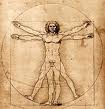 Vitruvius (BC 81-15 AD), a civil engineer and architect, and the Roman author of "De Architectura" points out that everyone has the right to enter a Roman atrium house vestibule, the main room, and a colonnaded garden. Vitruvius, by the way, probably inspired the famous drawing of the human body by Leonardo Da Vinci (1452-1519 AD) called "Vitruvian Man" from a description in his writings. The only places reserved as private spaces for the family in a Roman home are the bedrooms, dining rooms, and baths! Saint Paul reinforces this point when he writes in 1 Corinthians 14.23, "therefore, the whole church comes together, and outsiders or unbelievers enter the house uninvited."✞
Vitruvius (BC 81-15 AD), a civil engineer and architect, and the Roman author of "De Architectura" points out that everyone has the right to enter a Roman atrium house vestibule, the main room, and a colonnaded garden. Vitruvius, by the way, probably inspired the famous drawing of the human body by Leonardo Da Vinci (1452-1519 AD) called "Vitruvian Man" from a description in his writings. The only places reserved as private spaces for the family in a Roman home are the bedrooms, dining rooms, and baths! Saint Paul reinforces this point when he writes in 1 Corinthians 14.23, "therefore, the whole church comes together, and outsiders or unbelievers enter the house uninvited."✞
Free Entry
 We, who are twenty-first-century householders, might question how strangers could venture into our living room. But as far as the Corinthian atrium houses went, Saint Paul felt no need to explain that anyone was free to enter and welcome to walk in and out through the central corridor into the atrium.✞
We, who are twenty-first-century householders, might question how strangers could venture into our living room. But as far as the Corinthian atrium houses went, Saint Paul felt no need to explain that anyone was free to enter and welcome to walk in and out through the central corridor into the atrium.✞
Through the Front Door
 In a similar situation, in Mark 14.3-9, a woman anoints Jesus with perfume made of pure nard while reclining in a dining room in an atrium or central chamber of a Roman house. The fragrance may have been spikenard, also called "nard," "nardin," and "muskroot." It is a class of aromatic amber-colored essential oils derived from a flowering plant that grows in the Himalayas of Nepal, China, and India. It is very precious in Jesus' day. The Gospel writer in Luke 7.37 only comments that "she knew he is reclining in the house." Commentators have wondered how she enters into the colonnaded garden in the first place, and the best answer seems to be that she walks in uninvited through the open front door!✞
In a similar situation, in Mark 14.3-9, a woman anoints Jesus with perfume made of pure nard while reclining in a dining room in an atrium or central chamber of a Roman house. The fragrance may have been spikenard, also called "nard," "nardin," and "muskroot." It is a class of aromatic amber-colored essential oils derived from a flowering plant that grows in the Himalayas of Nepal, China, and India. It is very precious in Jesus' day. The Gospel writer in Luke 7.37 only comments that "she knew he is reclining in the house." Commentators have wondered how she enters into the colonnaded garden in the first place, and the best answer seems to be that she walks in uninvited through the open front door!✞
Modern Concepts
 The English word "house" in North American and English post-industrial societies communicates a different notion because we experience public workspaces as separate from our private homes, and locked front doors secure our boundaries. We must imagine ourselves back in a radically different social and cultural context to gain some perception of an early church assembly in one of these atrium houses where the front door is always open during the day. People are free to enter and walk through. There is a shop at the front selling the wares produced by the family.✞
The English word "house" in North American and English post-industrial societies communicates a different notion because we experience public workspaces as separate from our private homes, and locked front doors secure our boundaries. We must imagine ourselves back in a radically different social and cultural context to gain some perception of an early church assembly in one of these atrium houses where the front door is always open during the day. People are free to enter and walk through. There is a shop at the front selling the wares produced by the family.✞
Christian Missions
 An Atrium house offers significant advantages, as well as some disadvantages, for the early Christian mission. One central function of the atrium house is crucial for understanding the Pauline mission in these settings. The Greek house is concerned with creating a world of privacy, excluding the inquisitive person passing by. Still, the Roman atrium house invites him or her in and puts its occupants on conspicuous show. There is always an opportunity for conversation about spiritual things there.✞
An Atrium house offers significant advantages, as well as some disadvantages, for the early Christian mission. One central function of the atrium house is crucial for understanding the Pauline mission in these settings. The Greek house is concerned with creating a world of privacy, excluding the inquisitive person passing by. Still, the Roman atrium house invites him or her in and puts its occupants on conspicuous show. There is always an opportunity for conversation about spiritual things there.✞
Early Church Club
 The voluntary association is a beneficial form of social relationship in ancient Greek and Roman cities. A great variety of groups of friends, relatives, neighbors, or working associates, draw up a constitution, found a meeting place, and declare themselves the association of "whatever!" An Early Church club as one of this group is usually not large but most often contains from a dozen to thirty or forty, rarely more than a hundred members.✞
The voluntary association is a beneficial form of social relationship in ancient Greek and Roman cities. A great variety of groups of friends, relatives, neighbors, or working associates, draw up a constitution, found a meeting place, and declare themselves the association of "whatever!" An Early Church club as one of this group is usually not large but most often contains from a dozen to thirty or forty, rarely more than a hundred members.✞
Private Clubs Thrive
 Before the evolution of Early Church clubs, private clubs of various sorts thrive unregulated in the West and the East. While information about them is relatively sparse and mainly confined to inscriptions, it provides a reasonably intelligible if only a general picture. Multiple groups form clubs for various purposes. Trades, including bakers and shoemakers, professions with musicians and actors, civic functions of firefighters, veterans, or athletes, are directed more to the social and religious than their members' professional or economic interests.✞
Before the evolution of Early Church clubs, private clubs of various sorts thrive unregulated in the West and the East. While information about them is relatively sparse and mainly confined to inscriptions, it provides a reasonably intelligible if only a general picture. Multiple groups form clubs for various purposes. Trades, including bakers and shoemakers, professions with musicians and actors, civic functions of firefighters, veterans, or athletes, are directed more to the social and religious than their members' professional or economic interests.✞
Monthly Subscriptions
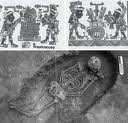 The clubs hold regular meetings, usually with religious ceremonies, elect officers and sometimes a patron, and exercise a particular discipline over their members. They also own property. For a monthly subscription to a common treasury, they provide their membership with banquets, other festive and leisure activities, and, in the end, an honorable burial. The associations classified as clubs for the poor include both males and females, slaves, and freedmen. They emphasize dining and funeral benefits, and by underwriting the necessary burial properties, they serve the public interest.✞
The clubs hold regular meetings, usually with religious ceremonies, elect officers and sometimes a patron, and exercise a particular discipline over their members. They also own property. For a monthly subscription to a common treasury, they provide their membership with banquets, other festive and leisure activities, and, in the end, an honorable burial. The associations classified as clubs for the poor include both males and females, slaves, and freedmen. They emphasize dining and funeral benefits, and by underwriting the necessary burial properties, they serve the public interest.✞
Roman Open House
 The contrast between space for visitors and room for the family in the Roman open house indicates a welcome for uninvited visitors. There is no distinguishing contrast between work and leisure. Their business is regularly conducted through an open door at home, whether by an emperor receiving his secretaries and procurators' reports or by a republican noble giving his legal advice. A merchant, craftsman, or shopkeeper might operate from his workshop or sell goods he has produced in his shop as part of his home.✞
The contrast between space for visitors and room for the family in the Roman open house indicates a welcome for uninvited visitors. There is no distinguishing contrast between work and leisure. Their business is regularly conducted through an open door at home, whether by an emperor receiving his secretaries and procurators' reports or by a republican noble giving his legal advice. A merchant, craftsman, or shopkeeper might operate from his workshop or sell goods he has produced in his shop as part of his home.✞
Visual Axis
 When a passerby looks through the open door of a Roman open house, he or she could see right through! Often a visual axis ran from the open door through the main room, then through "the living room office," where the owner is displayed as if upon a stage. The floor was built a few inches higher than the other rooms, and then into the colonnaded garden. There are many examples, among them the "Casa dell' Atrio a Mosaico" in Herculaneum. The vista from the open door passes through the atrium's center into the living room office, with a garden opening off to the right. The "Casa del Mobilio Carbonizzato," also in Herculaneum, has a view from the door framed by the openings of the living room office, then focuses on the shrine in the garden wall beyond.✞
When a passerby looks through the open door of a Roman open house, he or she could see right through! Often a visual axis ran from the open door through the main room, then through "the living room office," where the owner is displayed as if upon a stage. The floor was built a few inches higher than the other rooms, and then into the colonnaded garden. There are many examples, among them the "Casa dell' Atrio a Mosaico" in Herculaneum. The vista from the open door passes through the atrium's center into the living room office, with a garden opening off to the right. The "Casa del Mobilio Carbonizzato," also in Herculaneum, has a view from the door framed by the openings of the living room office, then focuses on the shrine in the garden wall beyond.✞
Secret Meetings
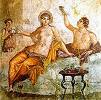 It is possible but not likely that in Christian gatherings held in a Roman house, the neighbors may not know what was happening. But there could be no question of secrecy in an apartment complex meeting, for everyone in the building probably knew everyone else's business. Outsiders are regularly invited or perhaps even wander into Christian meetings. Therefore, it would be a mistake to envision every Christian gathering at this time in a spacious private house or even operating with full privacy. Saint Paul wrote as in 1 Corinthians 14.23, "So if the whole church comes together and everyone speaks in tongues, and inquirers or unbelievers come in, will they not say that you are out of your mind? If an unbeliever or inquirer comes in while everyone is prophesying, they are convicted of sin and are brought under judgment by all."✞
It is possible but not likely that in Christian gatherings held in a Roman house, the neighbors may not know what was happening. But there could be no question of secrecy in an apartment complex meeting, for everyone in the building probably knew everyone else's business. Outsiders are regularly invited or perhaps even wander into Christian meetings. Therefore, it would be a mistake to envision every Christian gathering at this time in a spacious private house or even operating with full privacy. Saint Paul wrote as in 1 Corinthians 14.23, "So if the whole church comes together and everyone speaks in tongues, and inquirers or unbelievers come in, will they not say that you are out of your mind? If an unbeliever or inquirer comes in while everyone is prophesying, they are convicted of sin and are brought under judgment by all."✞
Religious Church Club
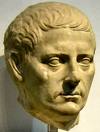 Religious church clubs didn't suffer a blanket prohibition on their activities in this Early Church period. Even unlicensed religious clubs only appear to be dissolved when they cause problems for the State. They then usually receive only minor penalties. E. Earl Ellis (1926-2010) in "Pauline Theology - Ministry and Society" asserts Suetonius (c69-c122 AD) wrote that individual religious clubs were exempt from the bans. Religious clubs included "those of ancient foundation" or "the old and legitimate ones."✞
Religious church clubs didn't suffer a blanket prohibition on their activities in this Early Church period. Even unlicensed religious clubs only appear to be dissolved when they cause problems for the State. They then usually receive only minor penalties. E. Earl Ellis (1926-2010) in "Pauline Theology - Ministry and Society" asserts Suetonius (c69-c122 AD) wrote that individual religious clubs were exempt from the bans. Religious clubs included "those of ancient foundation" or "the old and legitimate ones."✞
Names
 Similar terminology is common to both Christian congregations and private religious clubs. The church borrowed some terms from the clubs themselves. The names "assembly," "synagogue," and the words "overseer," "elder," "leader," and "patron" are occasionally used to designate a club leader and club officers.✞
Similar terminology is common to both Christian congregations and private religious clubs. The church borrowed some terms from the clubs themselves. The names "assembly," "synagogue," and the words "overseer," "elder," "leader," and "patron" are occasionally used to designate a club leader and club officers.✞
The Way
 Believers describe the church in Acts 24.14 as "the Way." Some religious clubs use this term, and its detractors tag it as "a sect," which is not derogatory but means a subgroup within a club. Such similarities are not sufficient to show that the church views itself as a club or derives its vocabulary from them. Still, neither do differences in terminology prove that the church does not so regard itself. It goes beyond the evidence to say either that the church avoided club terminology or that it imitated such language.✞
Believers describe the church in Acts 24.14 as "the Way." Some religious clubs use this term, and its detractors tag it as "a sect," which is not derogatory but means a subgroup within a club. Such similarities are not sufficient to show that the church views itself as a club or derives its vocabulary from them. Still, neither do differences in terminology prove that the church does not so regard itself. It goes beyond the evidence to say either that the church avoided club terminology or that it imitated such language.✞
Constitution
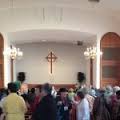 Specific Pauline congregations favored constructing the constitution of their churches along the lines of a religious club. Some elements reflect the synagogue practices, which have a religious club's status, and the churches originate. They include particularly a synagogue order and an organization of congregations in the homes of members or patrons.✞
Specific Pauline congregations favored constructing the constitution of their churches along the lines of a religious club. Some elements reflect the synagogue practices, which have a religious club's status, and the churches originate. They include particularly a synagogue order and an organization of congregations in the homes of members or patrons.✞
Christian Trade Association
 Wayne A. Meeks writes in "The First Urban Christians - The Social World of the Apostle Paul." "The house church like the group that gathered with the tentmakers Prisca, Aquila, and Paul in Corinth and Ephesus might well have seemed to their neighbors as a Christian trade association or a club of some kind." During the closing days of the Roman republic, Rome's trade associations become a cover for political demonstrations, including criminal acts, and are successively banned, restored, and banned again. For similar reasons, Julius Caesar in BC 144 and Emperor Augustus between BC 31 and 14 AD dissolved the Christian trade association on earlier occasions. A recognized association, including a Christian one, is required to follow special licensing procedures. E Earl Ellis writes, "From time to time, various associations and clubs continued to get involved in riots and political disturbances. The silversmiths at Ephesus in Acts 19.23-41 and the sports clubs at Pompeii provide well-known examples, and sometimes they were dissolved for a season. But it probably went too far to characterize such disturbances as 'genuine attempts at social revolution.'"✞
Wayne A. Meeks writes in "The First Urban Christians - The Social World of the Apostle Paul." "The house church like the group that gathered with the tentmakers Prisca, Aquila, and Paul in Corinth and Ephesus might well have seemed to their neighbors as a Christian trade association or a club of some kind." During the closing days of the Roman republic, Rome's trade associations become a cover for political demonstrations, including criminal acts, and are successively banned, restored, and banned again. For similar reasons, Julius Caesar in BC 144 and Emperor Augustus between BC 31 and 14 AD dissolved the Christian trade association on earlier occasions. A recognized association, including a Christian one, is required to follow special licensing procedures. E Earl Ellis writes, "From time to time, various associations and clubs continued to get involved in riots and political disturbances. The silversmiths at Ephesus in Acts 19.23-41 and the sports clubs at Pompeii provide well-known examples, and sometimes they were dissolved for a season. But it probably went too far to characterize such disturbances as 'genuine attempts at social revolution.'"✞
"Christian Trade Guild"
by Ron Meacock © 2021
| ^Top Page | Next | Previous |